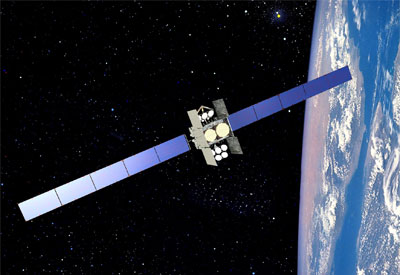Space cadets from Ozby Taylor Dinerman
|
| It is obvious that Australia needs its own space capability. The size of the nation and its position on the southern rim of the Asia Pacific region gives it a unique set of strengths and vulnerabilities. |
After some bolierplate language about the importance of space, the report states: “The Government has placed a priority on space situational awareness and has requested that Defence explore means by which to strengthen our space situational awareness and mission assurance capability. This will include the ADF developing a career stream for space specialists.” Because the Australian military is a small force with an excellent reputation, other nations will be watching closely to see how they go about selecting and training this new team.
It is obvious that Australia needs its own space capability. The size of the nation and its position on the southern rim of the Asia Pacific region gives it a unique set of strengths and vulnerabilities. The relatively small size of its population means that the ADF must at all costs seek to maximize the use of unmanned technology. Spy satellites are, by their nature, far less manpower intensive than patrol aircraft or even UAVs.
As the report says “The ADF’s primary operational environment is a vast area. We need to have comprehensive situational awareness and an ability to operate within this environment with decisive military effect, if required.” This means that Australia must have a fairly comprehensive set of space-based assets, not just communications and imaging satellites but eventually, at a minimum, GPS augmentation and electronic intelligence gathering spacecraft.
Supported by a comprehensive and robust space force, the new and larger squadron of 12 submarines that is the centerpiece of the White Paper’s plan for Australia’s naval forward defense will be far more effective. This will mean that they will need a lot more than just one or two small orbiting platforms. They will need a combination of high resolution optical, radar, and multispectral systems and the ability to transform the data stream from these satellites into timely, useful intelligence. This will not come quickly or cheaply, as the Japanese have learned.
Indeed, it may be that Japan is a good example of the learning process that a new 21st century military space power has to go through. They have launched a number of both imaging and radar satellites and in the process have learned some painful lessons. First, they found out that in spite of their impressive national technological base it is neither economical nor effective to manufacture everything domestically. With a tiny space industry of its own Australia will not be tempted to do this.
What may happen instead is that the government will decide that they need to create an Australian national space champion. With a lot of time and money they could build up a capability to manufacture satellites. This would hundreds of millions of dollars to the cost of these systems, not to mention the delays.
To avoid this and to still gain a useful dividend on its investment, Australia could carefully examine its existing capabilities and build a high degree of expertise in certain niche areas, such as satellite controls, ground stations, encoded space communications, or integrating space imagery into a highly-accessible national command and control network.
Inevitably this new military program will force the government in Canberra to take a new look at its civil space program. According to a November 2006 government study, they abolished the Australia Space Office in 1996 and replaced it with a Space Forum that acts as an interagency committee. Their civil space program is pitifully small. What they will soon learn is that to have any sort of effective military space power, they need to have at least a minimal civilian space program to provide balance and a team of science-oriented professionals who understand space operations.
| Inevitably this new military program will force the government in Canberra to take a new look at its civil space program. What they will soon learn is that to have any sort of effective military space power, they need to have at least a minimal civilian space program to provide balance and a team of science-oriented professionals who understand space operations. |
Australia will also have to judge for itself how much it wants to use American technology and launch services. The example of Australia’s role in the WGS is a powerful precedent. Yet there is no US military satellite project that matches Canberra’s requirements, though US commercial remote sensing satellite manufacturers could build the optical and multispectral ones. The radar satellites could perhaps be Israeli or Canadian, since no American firm has ever built anything that could fulfill this need.
On the other hand, the Australians could turn to Europe, as they have done recently with their helicopter purchases. Italy’s Cosmo-Skymed has an excellent reputation and France’s Helios imaging satellites would provide a full military capability, though at a fairly steep price.
Any array of spacecraft designed to cover Australia’s area of interest will inevitably provide them with an unmatched level of situational awareness over most of the Earth’s southern hemisphere. How they chose to use this will lead to some potentially very interesting relationships or, on the other hand, to some new kinds of tensions. South Africa, Argentina, and Chile will find themselves under a whole new level of scrutiny and their reactions may not wholly benign.
In any case the Australians have shown once again that they do take their defense commitments seriously. Unlike some of America’s traditional allies, they are at least not taking a free ride.
